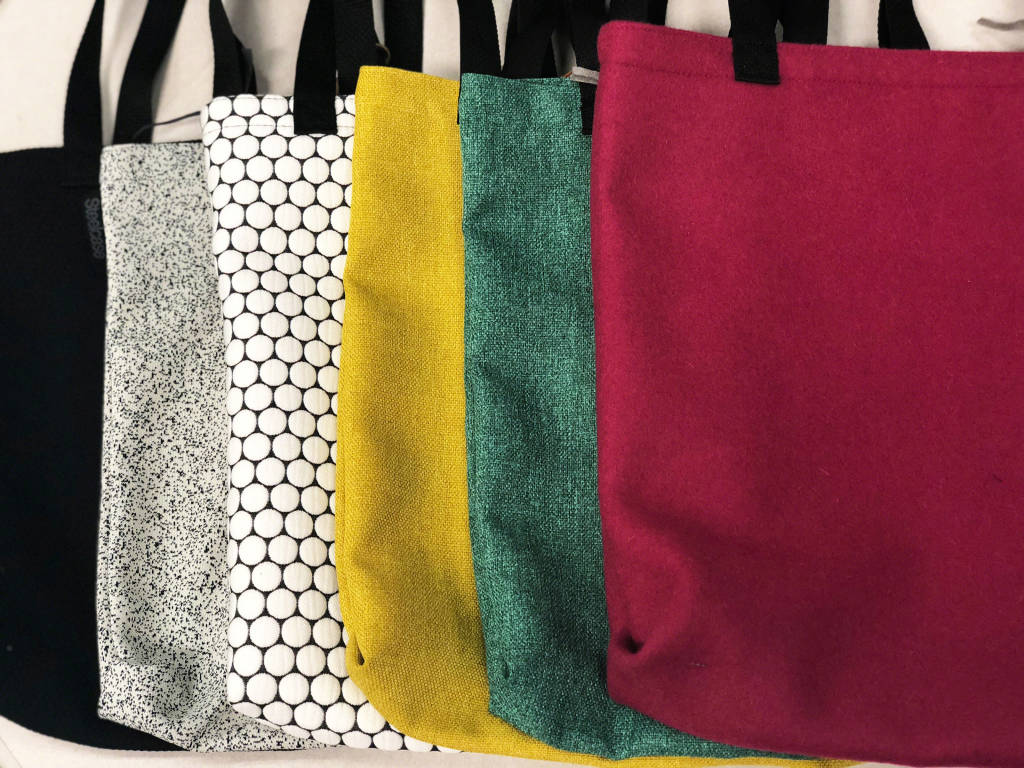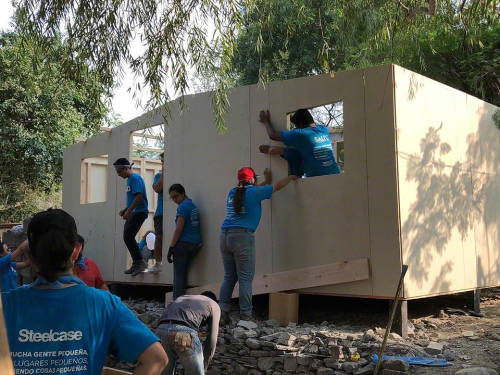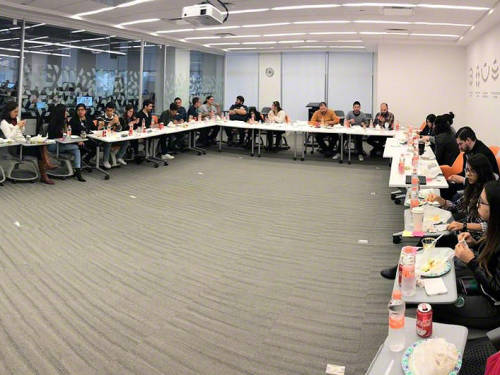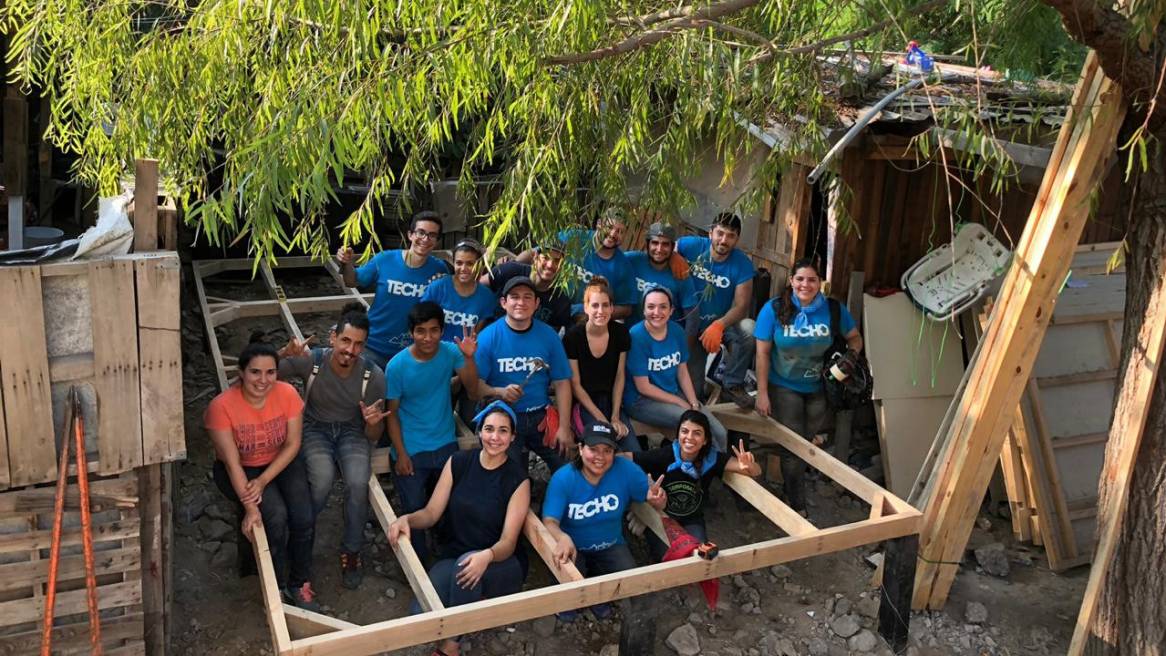The Purpose Revolution
How an innovative approach to community impact is delivering sustainable change and engaging employees.
Consider the difference between donating your money and donating your time. Now, consider the difference between volunteering for a few hours and, instead, working with a team to solve a problem that impacts people for years to come. This is social innovation.
Kim Dabbs, director of social innovation and engagement for Steelcase, has been working for the last year in a new role designed to nurture a culture of empowerment and community. She describes this new approach to community impact as a way of creating shared value between Steelcase and the communities where its people live and work. She spoke with 360 about how she’s nurturing a portfolio of impact—traditional models of giving alongside new scalable systems and sustainable social change already making a difference in communities around the world.
360: Let’s start with some real world examples of how social innovation is taking shape?
Kim Dabbs: We’ve focused in on partnerships aligned with quality education and reducing inequality. We’re trying to bring about positive change to the people we’re working with as well as to our planet. So, when we had an employee identify an opportunity around wasted textile scraps, we enlisted the help of a social entrepreneur. We ended up forming a partnership with Janay Brower, owner of Public Thread in Grand Rapids, Michigan. They reuse our leftover scrap fabrics to make computer bags and laptop cases which we give to customers and designers who visit Steelcase. Public Thread provides living wage jobs and training in industrial sewing to people in our West Michigan community and we’re able to reduce waste and showcase our range of beautiful fabrics. This shared impact means we don’t just make a difference today, we make a difference for years to come.
In India, Steelcase has partnered with Everybody Can Change By Design (ECBD) which teaches children from under-resourced communities design thinking to problem solve everyday issues. Nearly 300 students took part in a recent program where they identified 24 new solutions to situations they might encounter in their daily lives, like dealing with water shortages and lack of quiet space to study at home They came up with concepts such as organizing a collective library to share books and creating a water collection and storage system. We are using our unique knowledge of innovation methods and mindsets and giving our employees a way to share that with the community. Now students have a new way of seeing and making change in the world.

360: How does social innovation differ from other ways of approaching community impact?
KD: Social innovation is a natural evolution of how the world is shifting and changing. At Steelcase, we’re keeping the core principles of how we engage with the community. But when we do it through social innovation, the impact we see is based on how we invest in our communities, how we integrate it into the work we do and how we institutionalize it as a company. So, those three pillars are going to provide a robust solution and new approach for a theory of change in any of the UN’s sustainable development areas we focus on.
When we started to have conversations about what this looks like for us, we engaged a lot of different stakeholders including our researchers, employees and people in the community. We started to see areas of intersections where we could innovate to accelerate and amplify work being done in local communities. We also were able to envision how to join forces and take a design thinking approach to make that happen. We could see momentum building as the work evolved, and then we were able to try to understand what the moment was where a transformational change happened, where there was a shift from service to exponential impact.
360: How do you explain the importance of social innovation to the bottom line of the business?
KD: Social innovation is not separate from the business. It’s part of the business. Everything we do, everything we design as a company has an impact on the world, and making sure we have holistic policies, practices and partners both inside and outside of Steelcase is key and critical to how we deliver. One example is our partnership with Talent 2025. It’s a consortium that lets us share and gather information about HR policies and practices that we can pull into our organization as opportunities arise. So, it’s deeply embedded in how we do business and in our DNA as a company. Steelcase has a long history of social innovation — even before it had a name.
360: How does social innovation factor in to what you call “the purpose revolution” – the desire for people to find meaning where they work?
KD: We’re in this moment where the next generation of employees are looking for more. They’re not only looking for opportunities to engage — they’re also looking to work for companies they know are doing the right thing, and we want to attract, hire and retain those people. Who we are as a company and how we do business is essential to the foundation of purpose. I believe it’s equally important for our actions to match who we are and what we do, and for people to have multiple, meaningful ways to engage.
360: What feedback do you get from employees who work on these initiatives?
KD: Every location I go to, I leave with my heart just bursting with pride. How people care about people in their communities crosses cultures, geographies and locations. Their ability to jump in, connect with the needs of people in their community and mobilize resources has been beautiful to be a part of.
In Cluj, Romania, our teams saw a need to empower young girls and contribute to gender equity in their community. They worked with a local partner and built a week long girls’ empowerment camp called Camp Ignite. Steelcase team members took a week to design delivery and support systems for the camp. So often our employees will come up to me and give me a big hug and say, “This is why I work at Steelcase, because we are able to do things like this.” I always find that so amazing. Not only are we taking innovative and co-created approaches to how social impact happens, but we’re giving our employees the freedom and flexibility to understand what that looks like at the local level.
360: Creating sustainable change and coming up with new ways to solve big problems requires a significant investment. How have people reacted to this new approach?
KD: Innovation is never easy. We’re tackling some of the world’s toughest problems together with our local communities. What I can tell you is that we always have more people than we have community organizations to pair them with. And, I think it’s a testament to the type of people we have and our values as a company.
“The next generation of employees coming in aren’t only going to want that opportunity, they’re going to demand it, because that’s what purpose looks like in the future.”
Is it the easy way? No. But none of the issues we’re tackling are easy. Is it the way the world is going to be a more just and equitable place? Absolutely.


360: As you talk to community members about the impact on them and the people they serve, what do they tell you?
KD: As we go through this journey together, they’re so excited about having the opportunity to learn the methods and mindsets of innovation and to have this fantastic new approach. Traditionally, their day-to-day didn’t allow them to think about alternate futures in this way. The impact has been really profound and the opportunities to be a true community partner have built momentum.
In Monterrey, Mexico, our employees had been volunteering with an organization called TECHO which builds homes for people in need. We had done a weekend build — which is something we’ll continue to do. But, we also asked them, “If you had access to the resources and talents throughout Steelcase, what need would you explore?” We found they weren’t actually struggling with the volunteering. They needed help figuring out how to scale their volunteer model in a way that created consistency and built trust. That wasn’t going to happen with new organizations dropping in weekend after weekend. So, we worked with them to use our learning teams to create different scalable models to train volunteers and create consistent experiences from site to site. So, instead of doing a one-time build, we were embedding skills, knowledge and expertise within their organization that they didn’t have the capacity to do.
360: How are you going to know if this work around social innovation is successful?
KD: Much like any other open innovation project, there is no one simple solution. We believe strongly in prototyping and testing new ideas with organizations. This is the ability to give them lots of different solutions to maybe one of these big tough questions in the service of learning more than anything else. We may be tackling a design challenge with them, but building a culture of innovation is what’s going to be persistent within that organization. If we can do both at the same time, we’ll know we’ve succeeded.
 Kim Dabbs serves as director of social innovation and engagement at Steelcase. She has scaled innovation and designed programs that showcased impact as she collaborated on the launch of the new Steelcase Learning + Innovation Center built as a global hub in Munich, where she is currently based. She has a passion for building a culture of opportunity and is leveraging that mindset as she partners with organizations leading transformational change projects around the world.
Kim Dabbs serves as director of social innovation and engagement at Steelcase. She has scaled innovation and designed programs that showcased impact as she collaborated on the launch of the new Steelcase Learning + Innovation Center built as a global hub in Munich, where she is currently based. She has a passion for building a culture of opportunity and is leveraging that mindset as she partners with organizations leading transformational change projects around the world.


